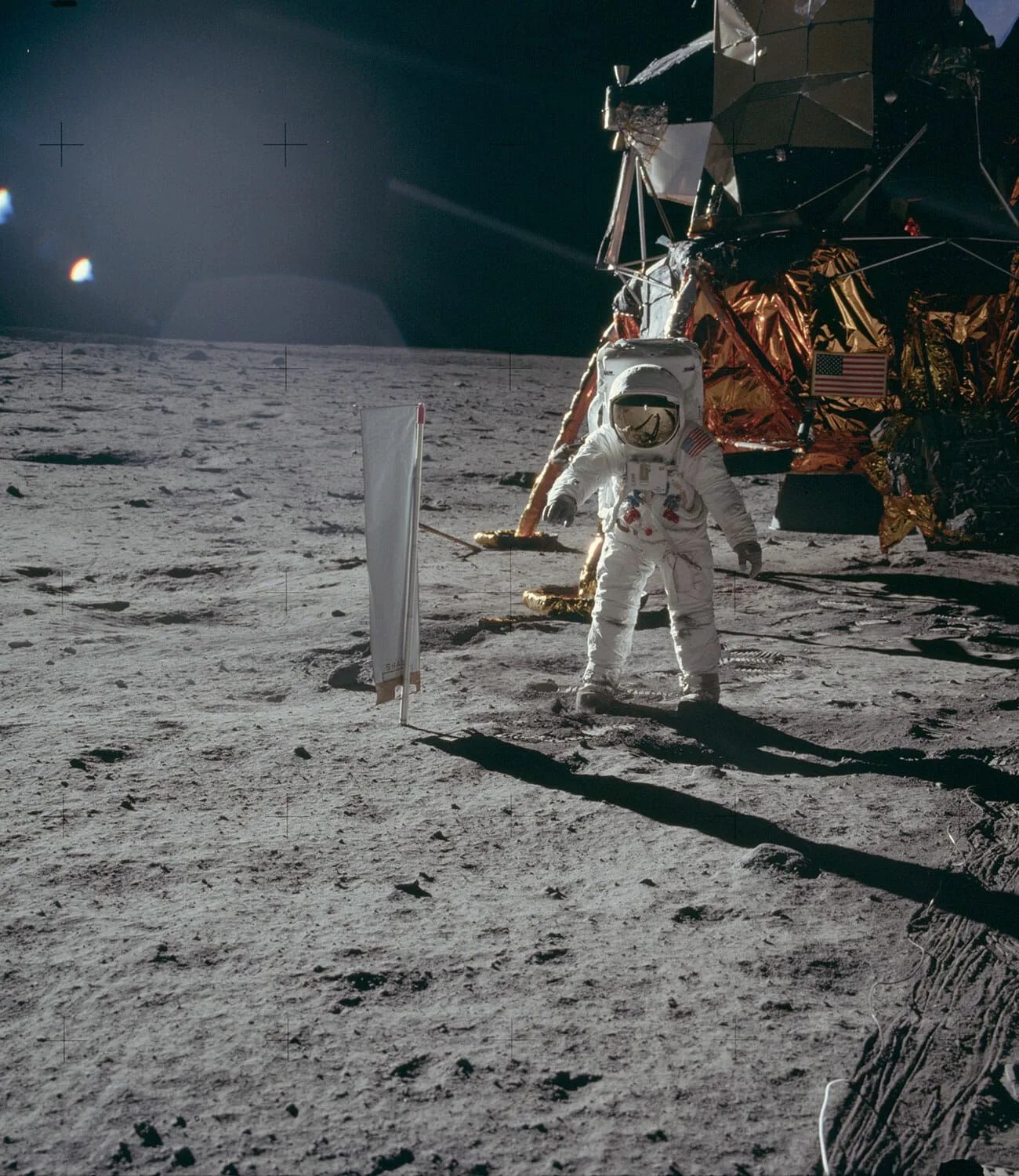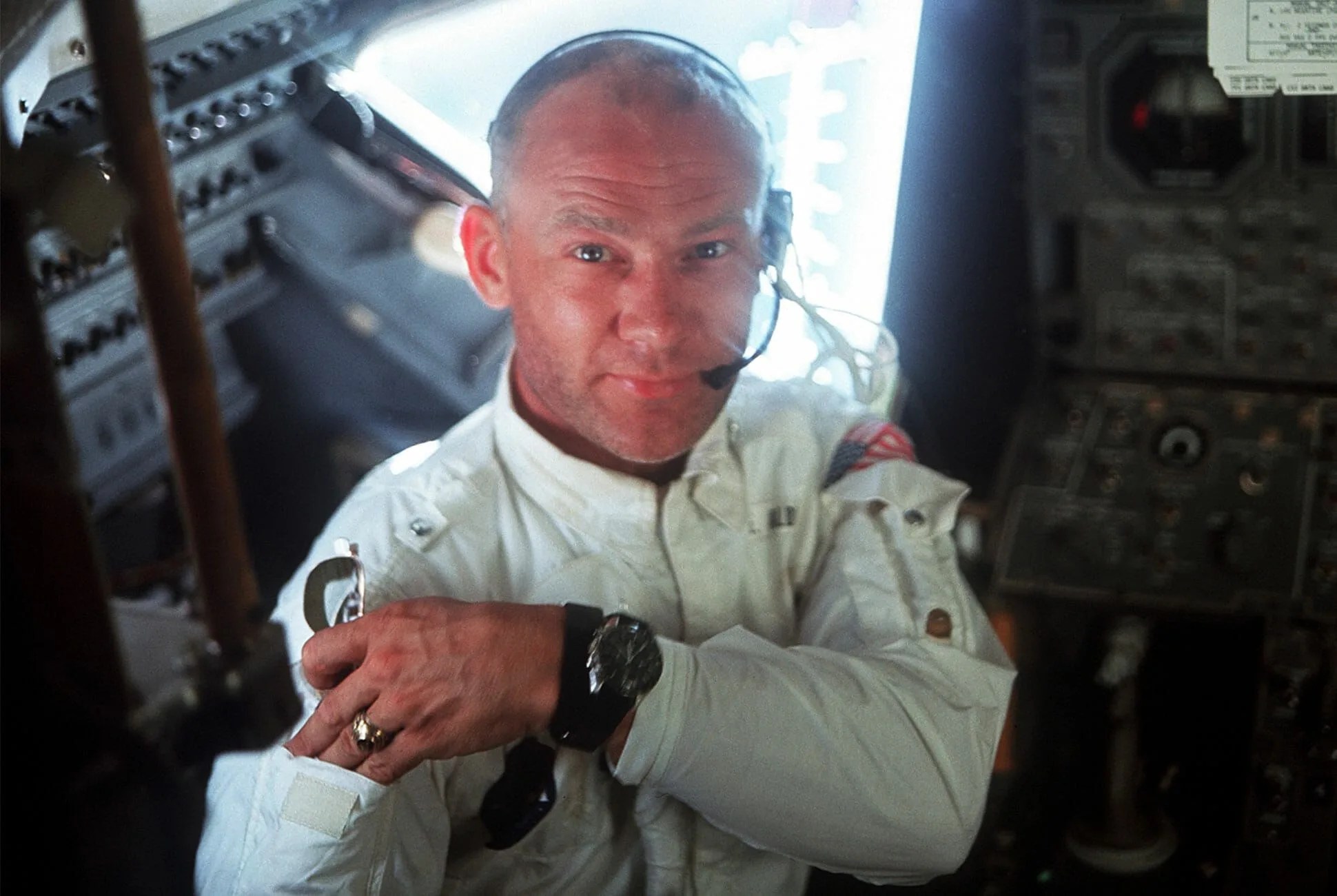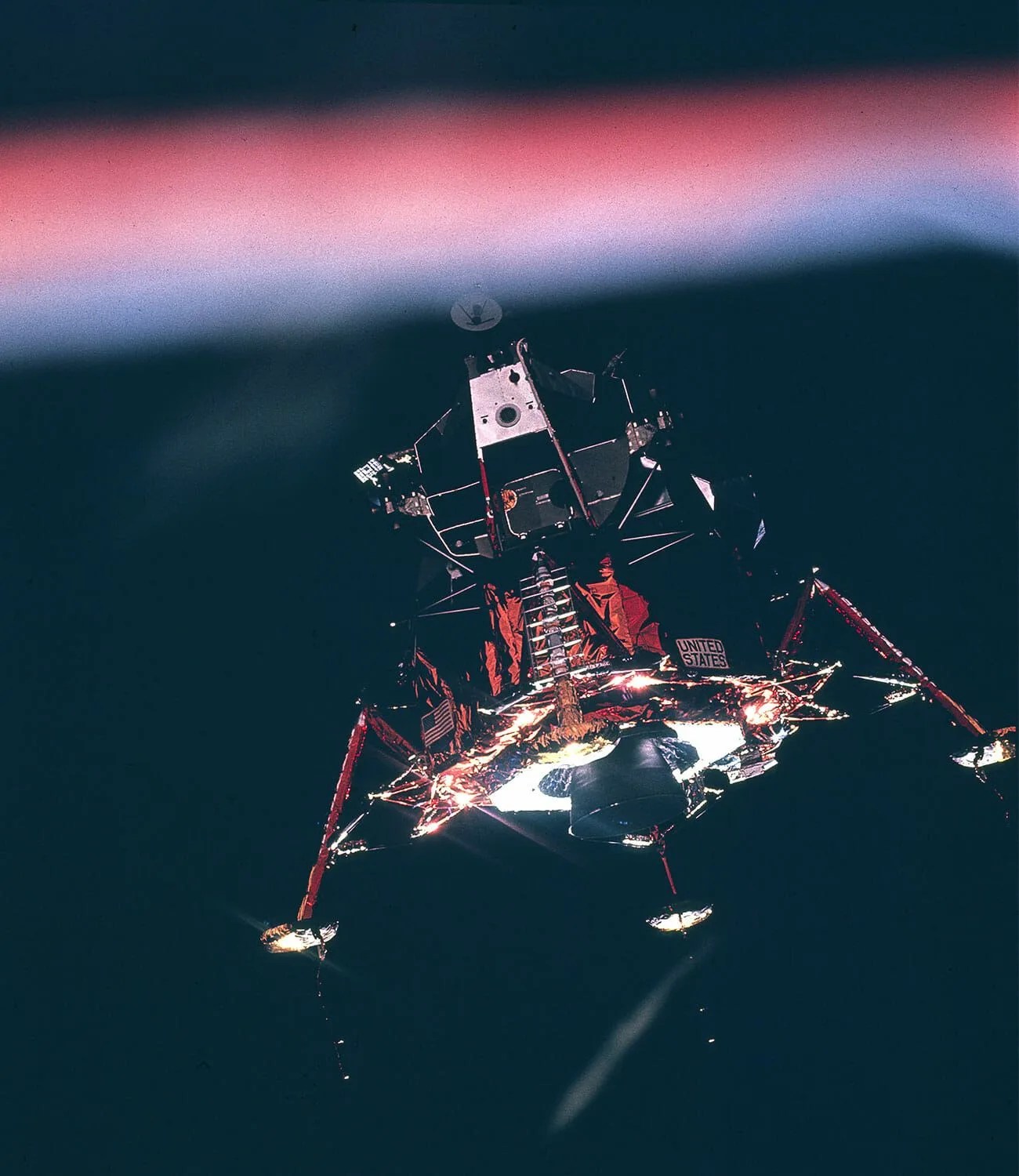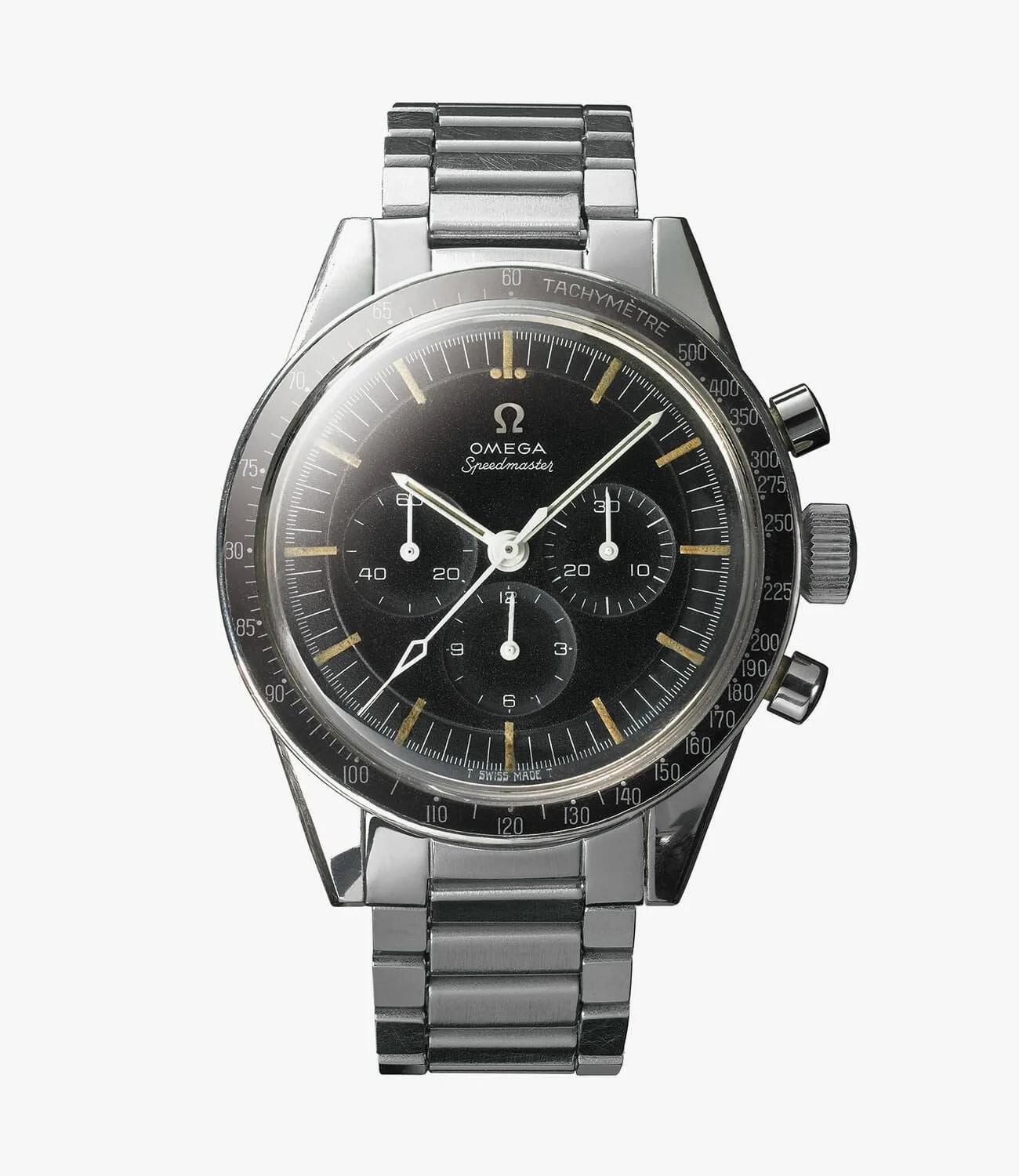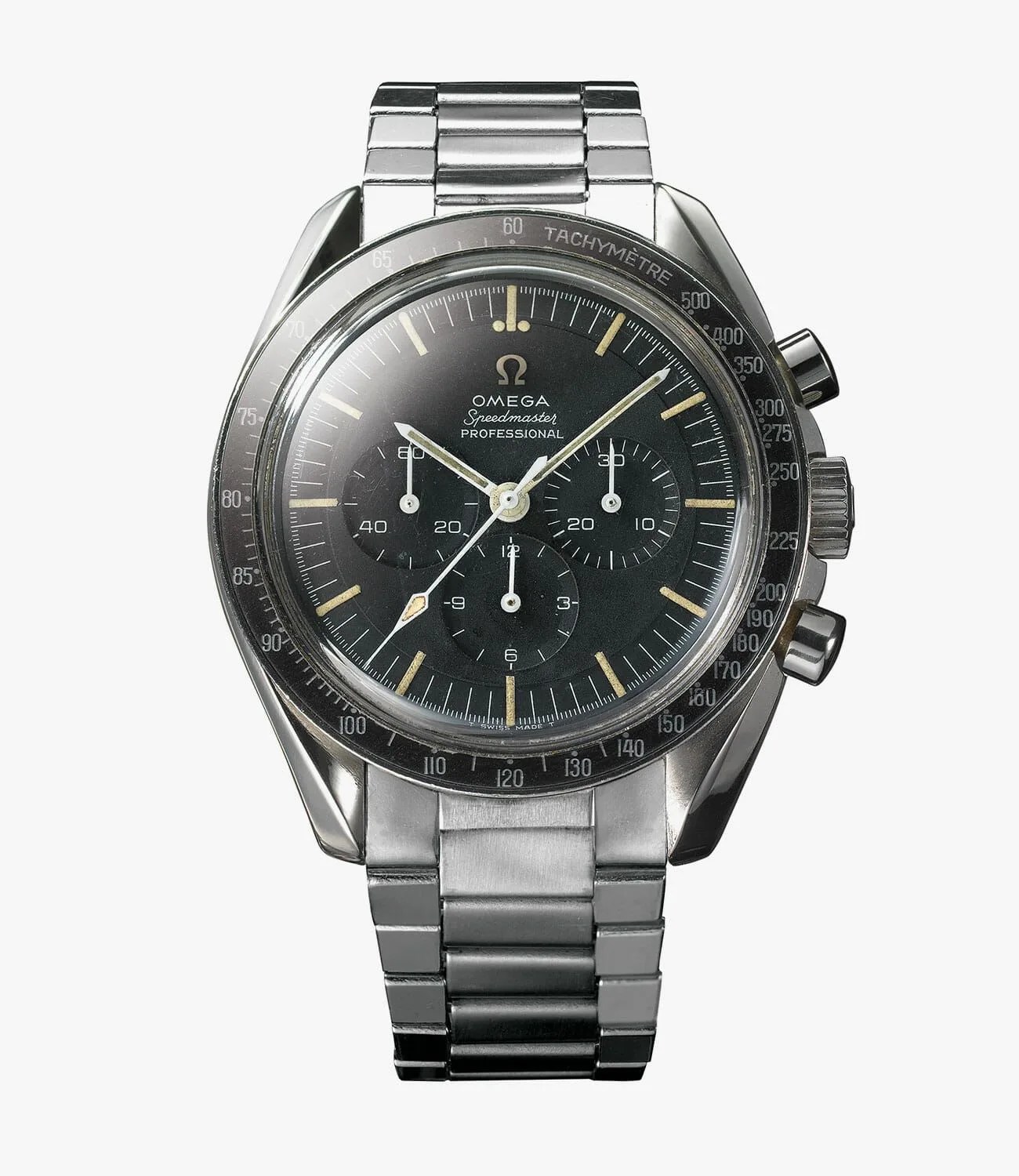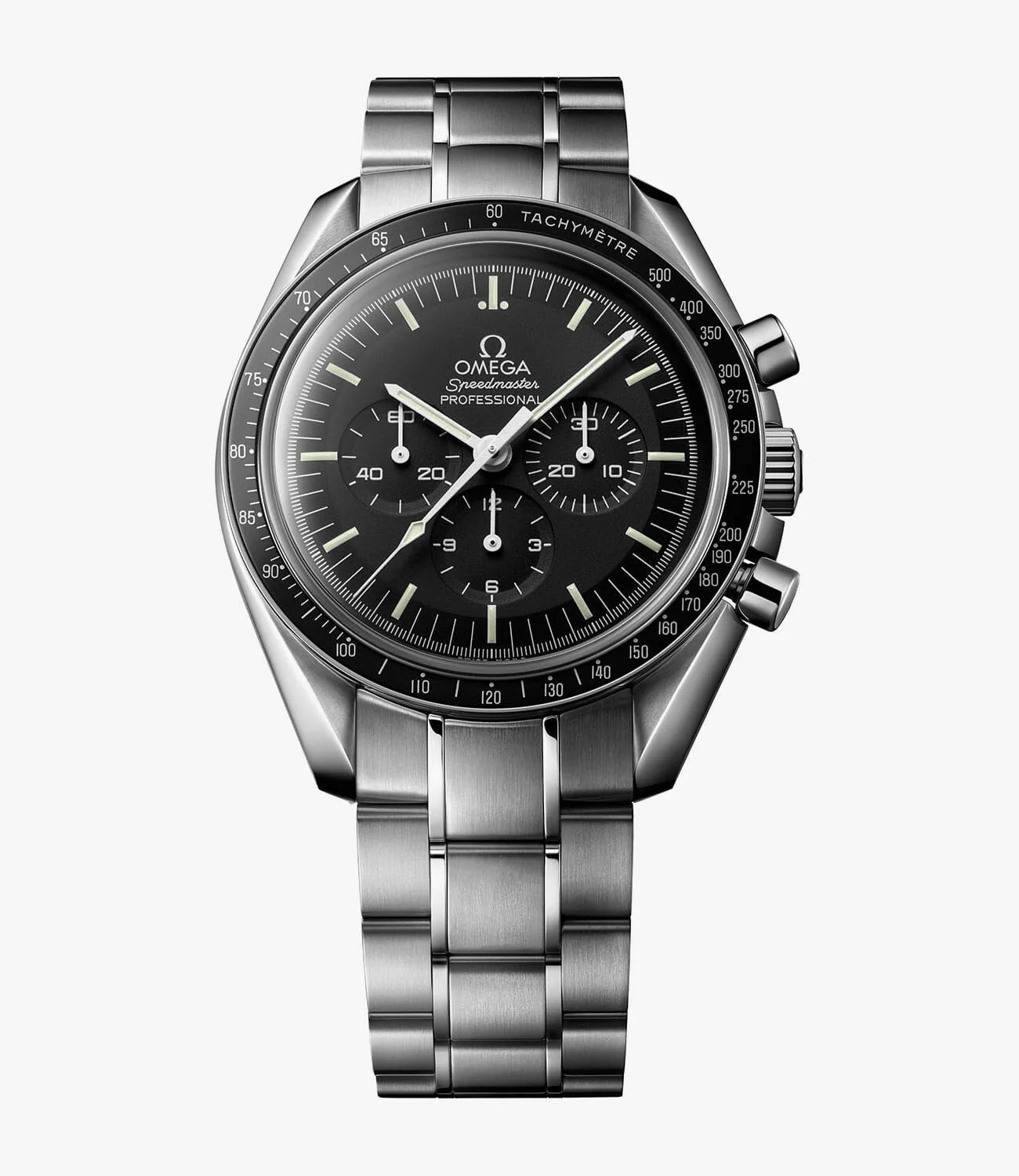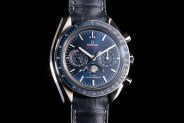In the late 1800s, celebrated French author Jules Verne published a pair of sci-fi novels predicting man’s journey to the Moon. They depicted a spacecraft being fired from a columbiad (a type of Civil War-era cannon) in Florida to the Moon, and subsequently splashing down in the Pacific Ocean.
A century later, on the morning of July 16, 1969, Verne’s premonition came true. The Apollo 11 spacecraft, whose command module was incidentally named Columbia, launched into orbit from the Kennedy Space Center in Brevard County, Florida. Just four days later, on July 20, 1969, it landed on the surface of the Moon. Inside, it carried four important crew members: Commander Neil Armstrong, Command Module Pilot Michael Collins, Lunar Module Pilot Buzz Aldrin and, last but not least, the Omega Speedmaster mechanical chronograph.
Since that pivotal moment, the Speedy has become inextricably linked with the first lunar landing, even garnering the affectionate nickname “the Moonwatch.” NASA’s current Artemis program marks the first time in over 50 years for humans to return to the moon, and even longer since the history-making moment of the first man on the Moon — and the watch that accompanied him. Here, we’ll look briefly at the key steps that led Omega to become a part of the Apollo program, how the Speedmaster has evolved over the past five decades, and the role the iconic model continues to play in space travel today.
The Apollo Program
The Apollo Program continues to be considered one of the greatest technological achievements in history. Launched in 1963 with the mission to land humans on the Moon and bring them back to Earth safely, the Apollo Program was first conceived under the administration of President Dwight D. Eisenhower as a follow up to Project Mercury, which put the first Americans in space.
